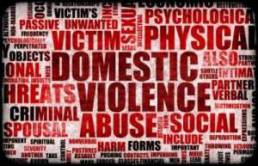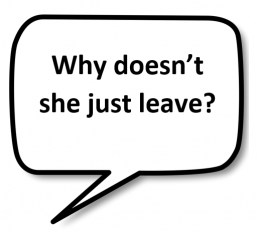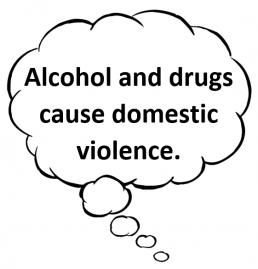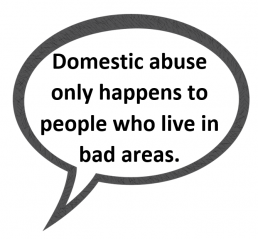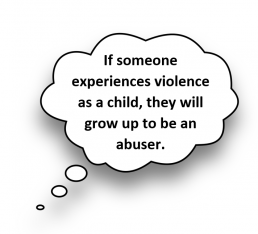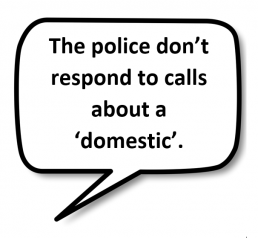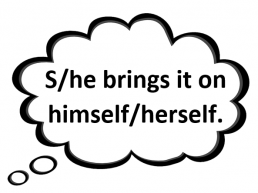The latest data (March 2020 – March 2022) shows that show that 67.3% of the victims of domestic homicide were female. This contrasts with non-domestic homicides where the majority (87.8%) of victims over the same time period were male.
Signs and Indicators
Some facts about domestic abuse:
- It is estimated that 1 in 4 women and 1 in 6 men will experience domestic abuse in their lifetime.
- People subjected to domestic abuse may live with it for years before they tell anyone or seek help. – the average time taken for someone to leave an abusive relationship is 7 years.
- Domestic Abuse doesn’t just happen in intimate relationships – Familial Abuse and Child to Parent Abuse are also forms of domestic abuse.
- Domestic abuse doesn’t always end when the relationship does – post separation abuse is common.
- Every week two women are killed by a current or former partner.
- There is a much higher risk of self harm and suicide amongst victims of domestic abuse.
- Domestic abuse is not about anger, it’s not caused by alcohol or drugs, it doesn’t just happen to a particular ‘type’ of person – domestic abuse is about one person having power and control over another.
Select each of the words below to find out more about types of abuse and Violence Against Women & Girls (VAWG)
Physical abuse is the most recognisable form of abuse. It can range from a slap or shove to a black eye, cut lip, or broken bone.
In the most extreme cases it can result in death.
Physical abuse doesn’t always leave visible marks or scars.
Having your hair pulled or objects thrown at you is domestic abuse too.
Many women experience domestic abuse without ever being physically abused.
Emotional abuse includes constant criticism, name calling, isolation from friends and family.
Emotional abuse can sometimes turn to physical violence over time.
See Coercive Control tile for more information.
This includes using force or threats to make you have sex or perform sexual acts with which you are uncomfortable.
It can also include taking and distributing of sexual photographs without your consent.
Key Fact: The Crime Survey for England & Wales (March 23) shows that 5.1% of people who experience domestic abuse in their lifetime are subjected to sexual abuse – although the real number is likely to be more due to under-reporting of this type of abuse.
Economic (Financial) abuse might include things like:
- Your partner taking your money or benefits
- Stopping you from working,
- Placing all the bills or debts in your name, or
- Monitoring how you spend money and other financial resources e.g. the telephone
Please watch the short film below from Surviving Economic Abuse
Coercive control is is an act or a pattern of acts of assault, threats, humiliation and intimidation or other abuse that is used to harm, punish, or frighten their victim (Domestic Abuse Act, UK Home Office, 2021)
Coercive Control includes things like:
- making threats to harm (including the abuser threatening to harm themselves if the victim doesn’t comply with their demands
- threatening to harm children or pets
- isolating from friends and family
- monitoring time and how it’s spent (timing supermarket visits for example)
- Tech abuse – monitoring use of social media, using phone tracking apps, CCTV
- controlling finances – how much is spent, not allowing or sabotaging work, insisting benefits are handed over to the abuser
Coercive control is often verbal and it can be hard to evidence. This type of abuse might start off as seemingly normal – wanting to spend lots of time together, saying it’s to keep the victim safe – but over time the control increases.
Key Fact: There were over 43,000 offences of coercive control recorded by the police in England and Wales in the year ending March 2023
The short video below from Scottish Women’s Aid explains some of the signs of coercive control.
Stalking and harassment is a criminal offence.
Stalking and harassment includes behaviours like:
- following – in person, on social media
- unwanted phone calls or text messages
- sending unwanted gifts
- approaching friends, family workplaces/colleagues to try to get to the victim
- Surveillance
- Property damage (including cars)
Key Fact: The police recorded 223,704 domestic abuse-related stalking and harassment offences in the year ending March 2023, accounting for a quarter of all domestic abuse-related crimes. The majority of domestic abuse-related stalking and harassment offences fell within the stalking subgroup category (43.8%), followed by the malicious communications subgroup category (35.9%;).
While there is no statutory definition for Honour Based Abuse, it is defined as
Any incident or pattern of controlling; coercive; manipulative; intimidating; or threatening behaviour, violence, or abuse perpetrated by one or more family, extended
family, and/or community members and/or current/former intimate partners in response to perceived or alleged transgressions of accepted behaviours. While most
often perpetrated against women and girls, anyone can experience honour based
abuse regardless of age, ethnicity, sexuality, religion, or gender, including men and
boys.
It can encompass but is not limited to:
Psychological, emotional, physical, sexual, spiritual and faith-related, economic, financial, and hate-aggravated abuse; forced marriage; female genital mutilation;
abduction; isolation; threats; murder; and other acts of domestic abuse.
People living in the context of an honour dynamic face additional barriers to their
ability to speak out against and report abuse for fear of repercussions including further and more severe abuse; shame; stigma; and being shunned/ostracised.
This definition was created by Karma Nirvana’s Survivor Ambassador Panel
supported by Dr Lauren Eglen, Rights Lab – University of NottinghamKey Fact: In the year ending March 2023, around 3,000 HBA-related offences were recorded by the police in England and Wales
A forced marriage is a marriage in which one or both spouses do not or cannot consent to the marriage and pressure and threats are involved for force agreement such as physical, psychological, financial, sexual and emotional pressure.
Mental Capacity to consent to marriage may need to be ascertained in some cases.
Predatory Marriage is when someone coerces, manipulates or threatens someone into marriage in order to gain financially – either property or money. Older people may be more at risk of predatory marriage.
The legal age for marriage in the UK increased to 18 on 27 February 2023.
An arranged marriage is not the same as a forced marriage.
More Info: The Forced Marriage Unit have a short film highlighting the impact that forced marriage can have on the victim and families.
Female Genital Mutilation (FGM) is any procedure that’s designed to alter or injure a girl’s (or woman’s) genital organs for non-medical reasons.
Performing, procuring or coercing someone into FGM is illegal in the UK.
It’s sometimes known as ‘female circumcision’ or ‘female genital cutting’. It’s mostly carried out on young girls. There are no recognised physical or hygiene reasons for FGM to be carried out. FGM procedures can cause:
- severe bleeding
- infections
- problems with giving birth later in life – including the death of the baby.
The FGM Act 2003 introduced a legal mandatory duty for regulated health and social care professionals and teachers to make a report to the police if they observe signs of FGM on a child aged under or receive a disclosure from a child aged under 18.
Key Fact: NHS Digital say that since April 2015, 35,415 individual women and girls had an attendance at a Health provider where FGM was identified.
Male Victims
Men can experience domestic violence in both heterosexual and same sex relationships.
Men experiencing domestic abuse may feel ashamed about what is happening or feel like they have done something to deserve it. They might be worried that people will think they are less of a man for ‘allowing’ themselves to be abused.
Refuge places and outreach support for men experiencing domestic abuse is available, although there is less provision than for women.
Key Fact: For the year ending March 2023, the Crime Survey for England and Wales (CSEW) estimated that 751,000 men aged 16 years and over experienced domestic abuse in the last year. This is a prevalence rate of approximately 3 in 100 men
- Between March 2020 and March 2022, 87 men were killed in the context of domestic abuse. In the majority of male victim domestic homicides, the suspect was a male family member (66.1%)
- Male victims may feel ashamed and that they are ‘less of a man’ for ‘allowing’ the abuse to happen.
- Perpetrators may tell the victim that they are ‘weak’ or not a ‘real man’.
- With some same-sex victims, threat of ‘outing’ is often used as a way to control by the abuser.
- Threats of not allowing contact with children are sometimes used as a way of controlling victims.
What might a person in an abusive relationship be feeling and experiencing?
Common Myths



